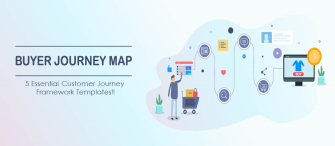Door-to- Door Selling: It is intimidating, tough, tons of rejections, tiring, heart-breaking and what not. But this bumpy road will surely take you to the top. It is advised to equip yourself first with the selling skills if you want to get into business school, sales job, or even if you are planning to have your own start up.
Door-to-Door selling is the first step of sales. It gives you an exposure, fun way to make money and you ace the art of direct selling.
Before going door-to- door, once must have a clear strategy to approach potential customers, the introduction, the pitch, the negotiation and the closure.
We present you a content-ready door-to-door selling PowerPoint deck which will guide you step by step to make a successful sale.
Download Ready Made Door-to-Door Selling PowerPoint Deck
12 door-to-door PowerPoint templates to know about your product that you are going to sell:
- About the Product:
Know your product inside out. Take a note of every detail of the product so that you can convince the customer. Believe in the product and present it in a way that customer would know that the usage of product will benefit him. Use above template to understand the product. Jot down ideas behind the product, quantity, cheap, design, originality, quality, etc. You can add your own points as per your requirement.
- Product List:
List down the products you wish to sell. Write their descriptions such as product name, features, price etc. You can also use customers rating card to show the credibility of the products.
- Identify your Ideal Clients:

Personalize marketing campaigns based on your ideal clients. Divide a market of potential customers into segments called demographic, geographic, behavioral and psychographic.
- Demographic: It sorts a market by demographic segments such as education, age, income, gender, race, etc. Demographic segmentation is the most commonly used because how we use the products and how much we are willing to spend is based on demographic factors.
- Geographical: Divide people based on geographies i.e. country, state, region, postal code, etc. It helps form clusters on the basis on location, topography, etc.
- Behavioral: Divide consumers into groups according to their buying pattern. Typical behavioral variables are purchase, user status, loyalty status, buyer readiness, adopter status, etc.
- Psychographic: It is measured by studying the activities, interests, and opinions of customers. This segment helps marketers understand consumer motivations for product or brand choice.
Find your potential customers based on market segmentation.
- Training Timeline:
Plan your days, weeks, months and get a proper sales training. Jot down your goals and work towards achieving those targets. Timeline will let you be disciplined and train you and hone your skills on time.
- Product Roadmap:
Incorporate this template to communicate why and what you are building. Product roadmap acts as a guiding strategic roadmap as well as a plan for executing the strategy. Use the product roadmap to show the benefits of a product to external stakeholders, including customers.
- Product Comparison:
Compare your product with competitors to know various features your competitors offer. List down the descriptions, pricing, features, rating, etc. It will help you assess whether you are one of the favorites of customers.
- Product Pricing:
Showcase your different price card of various products and services you offer. Give them options to choose from. Start from basic product pricing to standard product pricing. Consumers love to have choices.
- Competitor Analysis:
Figure out what your competitors are offering. With competitor analysis, you can evaluate what makes your product or service unique. You can strategize accordingly to attract your target market. Use above template to list down their products, services, growth pattern, profitability, marketing objectives, cost structure, etc.
- Competitive Advantage:

Briefly explain your product’s USP. In other words, just tell how your product is desirable than rest of the products in the market.
These templates will help you dig about your product. Enhance your product knowledge before knocking the doors.
Now, let us show you some door-to-door selling tips.
Just remember 3 P’s to make a perfect sales pitch:
- Be Presentable:
Dress appropriately. Wear clean and ironed clothes. Hair in place and no bad body odor. A good personality always attracts attention. So be presentable.
- Be Polite:

Always start a conversation with a greeting. Introduce yourself with a warm smile. Don’t try too hard. Just be genuine.
- Be Persistent:
You will be getting a lot of no’s your way. But do not let this frustration come on your next client. Be friendly and confident.
Download Content-Ready Door-to-Door Selling Complete Deck
This complete presentation on door-to-door selling is a great guide to help you in your sales career. Use these templates as lessons to hone your sales pitch.





 Customer Reviews
Customer Reviews


























